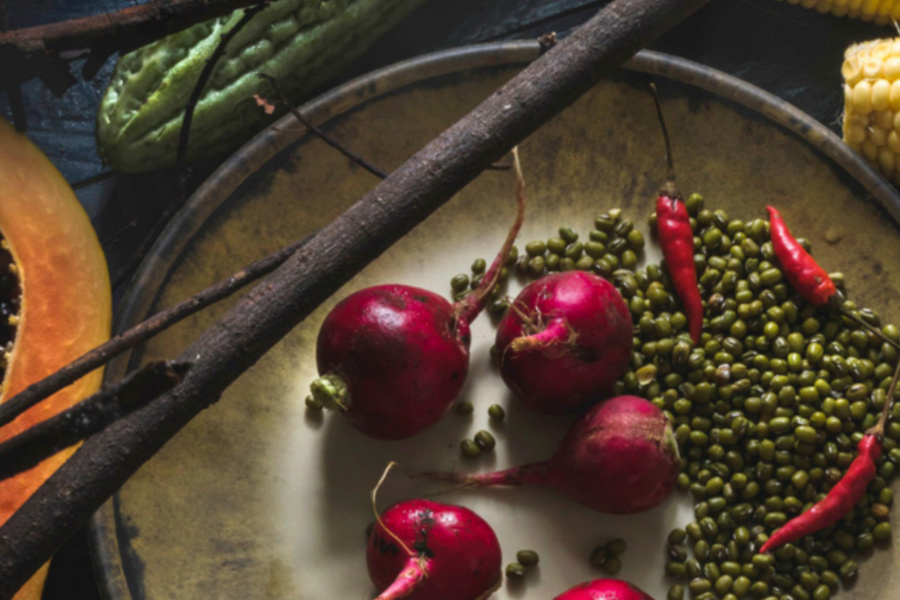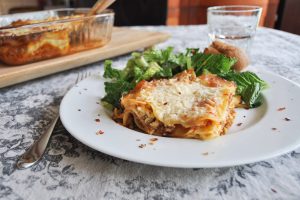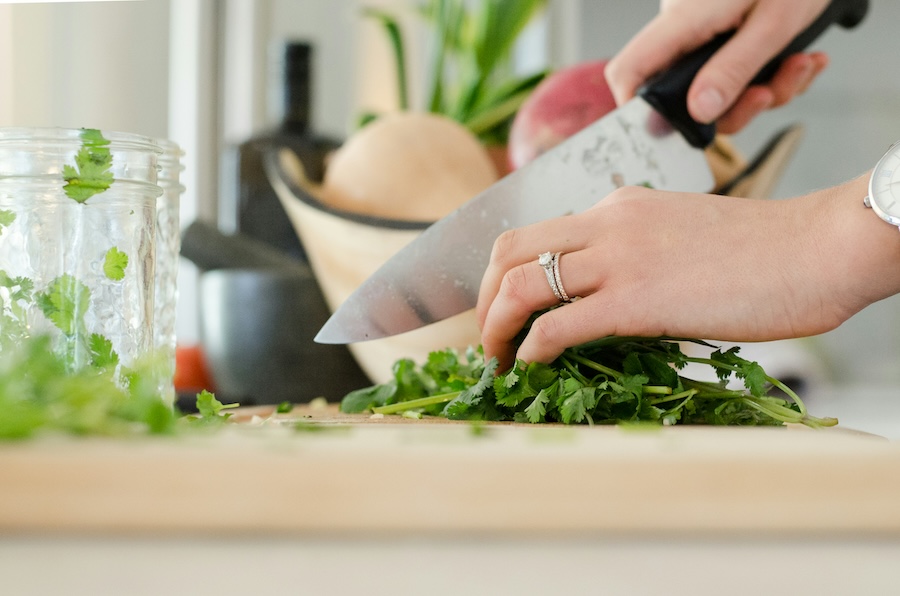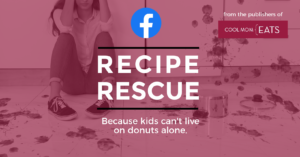Over the past week, I’ve been reading the World Wildlife Federation’s Future 50 Foods Report: 50 foods for healthier people and a healthier planet (PDF) and thinking a lot about how to families can incorporate more of these Future 50 Foods into our diets.
What is the Future 50 Foods list anyway?
The list of Future 50 Foods was created with input from tons of respected biodiversity, sustainability, and nutritional organizations worldwide. It includes a list of 50 (surprise!) very specific vegetables, grains, cereals, seeds, legumes and nuts, all with the purpose of encouraging shifts in how we eat across the globe, that will have impact on both our families’ health, and on our planet as a whole.
The Future 50 Foods list, according to the report, is intended to create three big dietary changes:
1. To increase the variety of veggies we eat to increase the vitamins, minerals and antioxidants in our diets
2. Incorporating more plant-based sources of protein in our diets to reduce the negative impact on our environment
3. Adding more nutrient-rich sources of carbohydrates
So starting this week, we’re actually making some changes in my own home to add more genetic diversity to the foods we’re eating, because the statistics in the report are staggering. And I want to do what we can to take care of both my kids and the earth.
Besides, it’s kind of exciting to open up our minds and kitchens to some new foods from new sources.
Related: 5 easy kitchen habits you can start today to help save the environment
Top image via Future 50 Foods report
Why the Future 50 Foods list matters
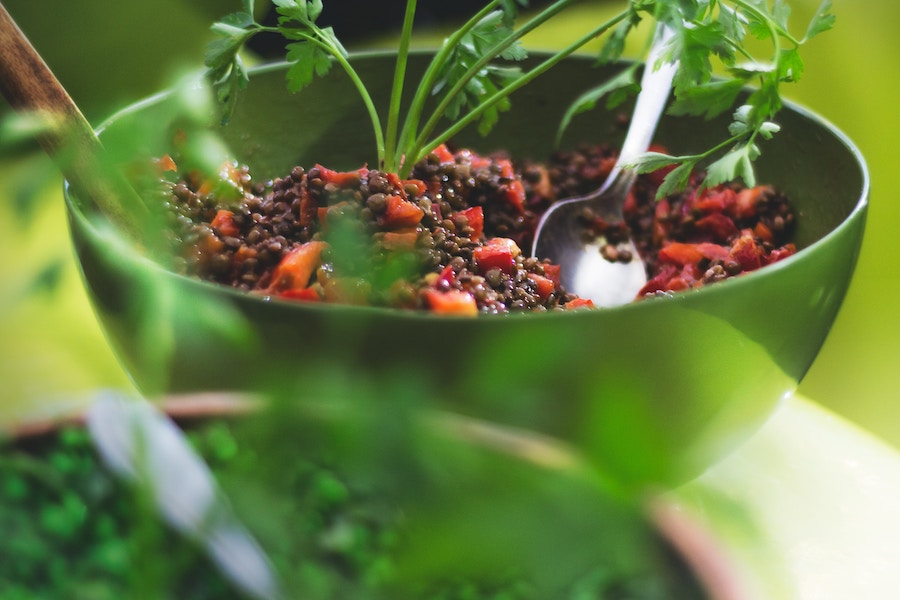
Photo: James Sutton via Unsplash
I had no clue that 75% of our global food supply comes from just twelve plants and five animal species. Twelve! That’s it!
In fact, just three species — rice, maize, and wheat — make up 60% of the calories we get from plants across the planet. Surely, parents, we can do better than getting the majority of our calories from just three ingredients?
There’s also a serious environmental impact in making some changes to how we eat, because we’re losing genetic diversity in plant life across the globe. In fact, since 1900, we’ve lost 75% of the genetic plant diversity in agriculture, and in the US alone, we’ve lost 80% of our cabbage, pea, and tomato varieties.
And once these species are gone, they’re gone forever.
We’ve also known for years that farming the same varieties of plants year after year depletes the nutrients in the soil, and in turn, many birds, animals, and wild plants die off.
As the Lorax said, This is bad.
In the last year-and-a-half, my own family has converted to a mostly vegan diet, thanks to my husband’s 100% vegan-all-the-time habits. I never, ever, ever would have thought I’d be the health-nut mom raising a family on veggies and plant protein alone, but we’ve made it work a lot of the time — with the occasional chicken tender thrown in, from time to time.
Related: Is it realistic to go vegan with kids? One mom’s real life tips and tricks.
5 tips to help you get more Future 50 Foods into your family meals
Here are some tips I’ve learned about being more eco-conscious with our kids and our food choices, and encouraging the variety that, admittedly, not every kid is excited about.
1. Make a cheat sheet of all 50 foods (or at least the ones you’re most likely to want to try)
Quinoa, spelt, and wild rice may be top of mind as far as grains on the Future 50 Foods list go, but perhaps…not so much when it comes to amaranth, khorasan wheat, or teff.
To make it easier on yourself, make a cheat-sheet on your phone (I’ve got mine saved in my Notes app in iOS) with a list of the 50 foods by category:
-Algae
-Beans and Pulses
-Cacti
-Cereal and Grains
-Fruits and Vegetables
-Leafy Greens
-Mushrooms
-Nuts and Seeds
-Root Vegetables
-Sprouts
-Tubers
This way, you can make a quick switch from your same-old foods to some of these newer, more exciting ones. Imagine how much fun you could have serving purple yams instead of regular old potatoes!
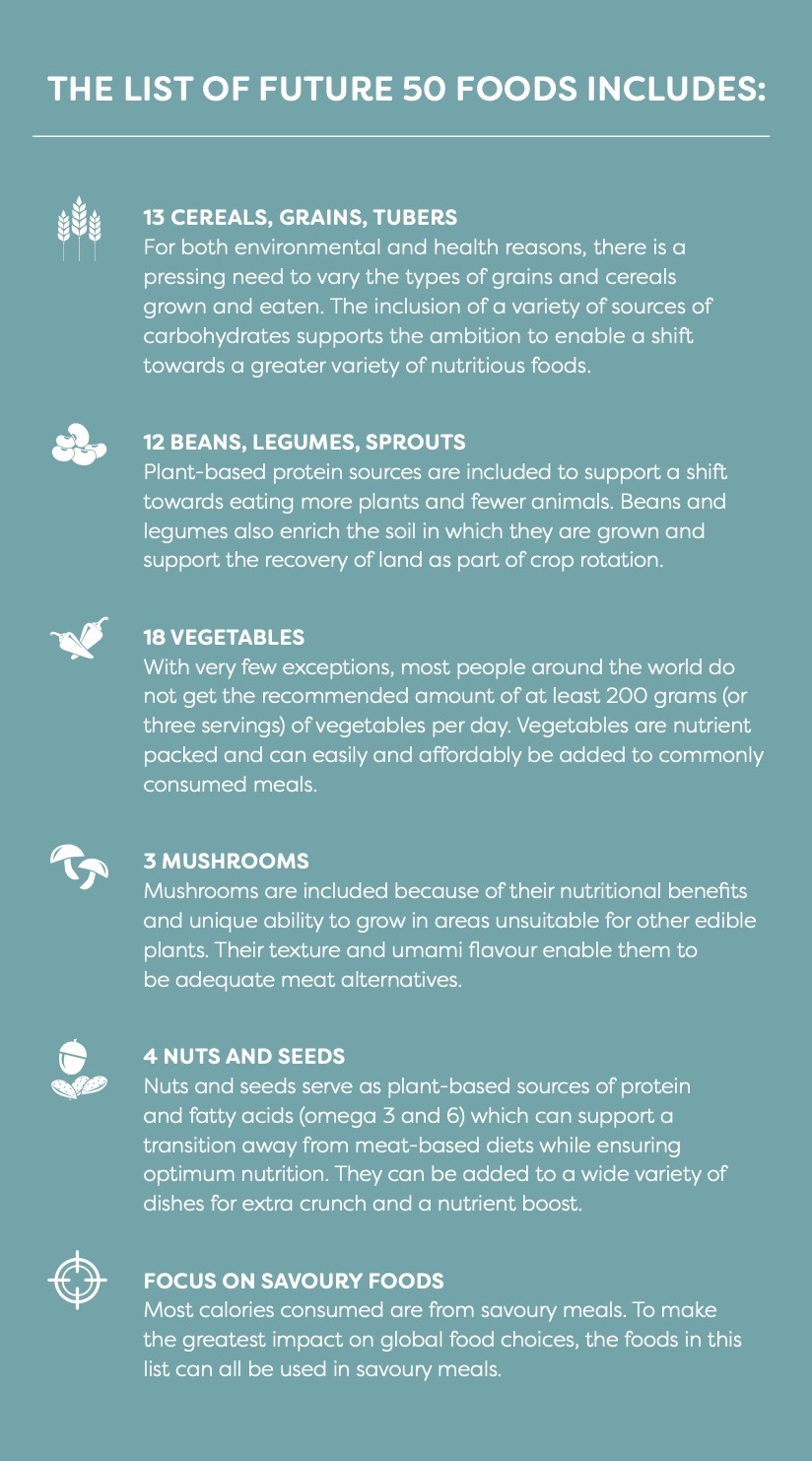
2. Ask your grocer for items they don’t carry.
Some of the WWF’s recommended foods can be hard to find for many of us — you don’t tend to just see wakame seaweed, black turtle beans, or fonio-based cereals on display in the end caps of your favorite supermarket chain.
Still, ask your grocery for them! If they have them in stock, you’re in luck. If not, they may start ordering them.
Either way, it’s a way to let the managers know that there’s a consumer need for these foods, and the more likely they are to stock them.
3. Make trying new foods a fun game.
Rather than insisting that your kids finish all the mung beans on their dinner plate, instead create a Survivor-style food challenge where each kid get to try new foods for prizes. You might be surprised that they end up liking a lot of new foods — even if they needed some incentive to get there.
One of the Future 50 food recommendations is laver seaweed, and I’ve been shocked to discover that my 8-year-old loves dried seaweed as a snack food. Who knows, maybe cacti (another Future 50 food) will be his new favorite.
Related: 7 kid-friendly vegan dinner recipes for Earth Day — and beyond.
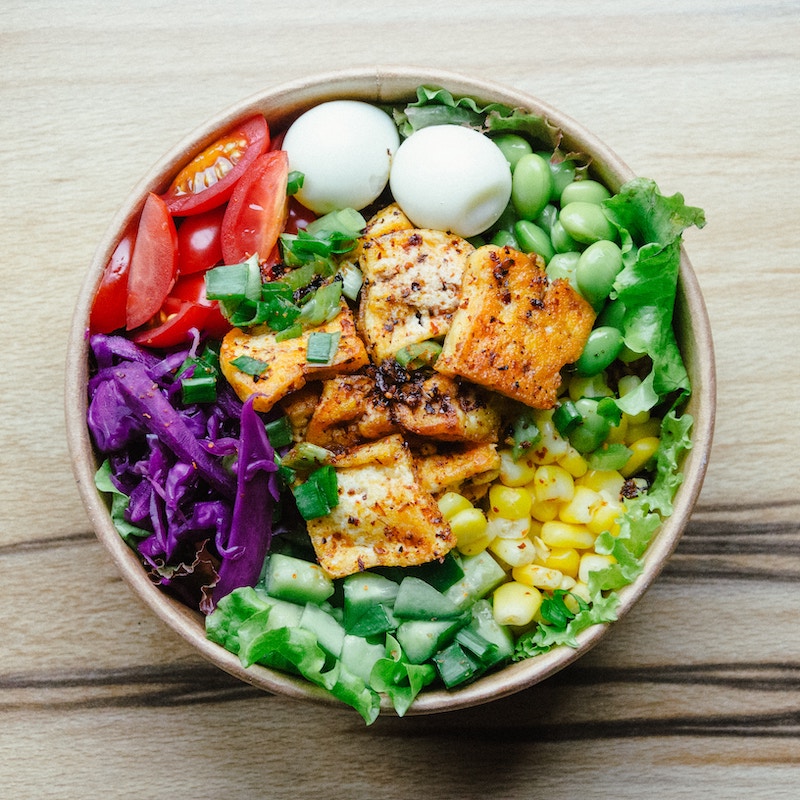
Make easy switches, like grilled tofu instead of chicken in a salad
Photo by Anh Nguyen on Unsplash
4. Look for easy substitution opportunities in your favorite recipes
Protein swaps
One of my family’s favorite recipes is Greek pasta with pulled chicken. Recently, we made some simple switches and now we sauté tofu (one of the Future 50 foods, as a form of soy beans) instead of the chicken, and we like it even better than the original.
All of my kids — notoriously picky eaters — devour it when it’s pan-seared to a lovely crisp, then sprinkled with Greek spices and olive oil.
Salad swaps
Not down for tofu? That’s okay. Look to your salad for great substitution opportunities, like tossing in some kale, spinachy, watercress or red cabbage into your mesclun mix. You can top with enokis instead of those white button mushrooms, or swap in crunchy jicama slices instead of cukes. You can also sprinkle with some toasted sesame seeds or even simple diced walnuts to give it some crunch and texture, swapping out those crunchy noodles or croutons .
Rice and grain swaps
Another easy way to make healthy switches is to trade out white rice for wild rice, quinoa or fonio — all Future 50 Foods — alongside the protein you serve. Chicken with rice becomes chicken with quinoa; your favorite Indian lamb dish gets a boost from wild rice instead of jasmine rice.
You can do the same when you’re making Buddha bowls too. I love this simple substitution, because picky eaters are so consumed with the toppings they are adding, they may hardly notice that the grain at the base has changed.
5. Try new varieties of foods you already love
It’s so easy to get into a rut when you’re grocery shopping — we’re busy, we’re tired, and we’re creatures of habit. So maybe just try buying new varieties of the very foods you already love!
For example, red tomatoes are the most widely consumed across the planet, but orange tomatoes are sweeter and have more vitamin A and B. Next time you’re at the market, try orange instead of red. Grab that giant container of wild rice instead of white rice. Reach for the spinach instead of the romaine lettuce.
Start by making just a few simple changes to your family’s mealtime routine, and you may find yourselves happier with the food you’re all eating — and happier with what you’re doing to keep the planet in good shape for your kids, too.
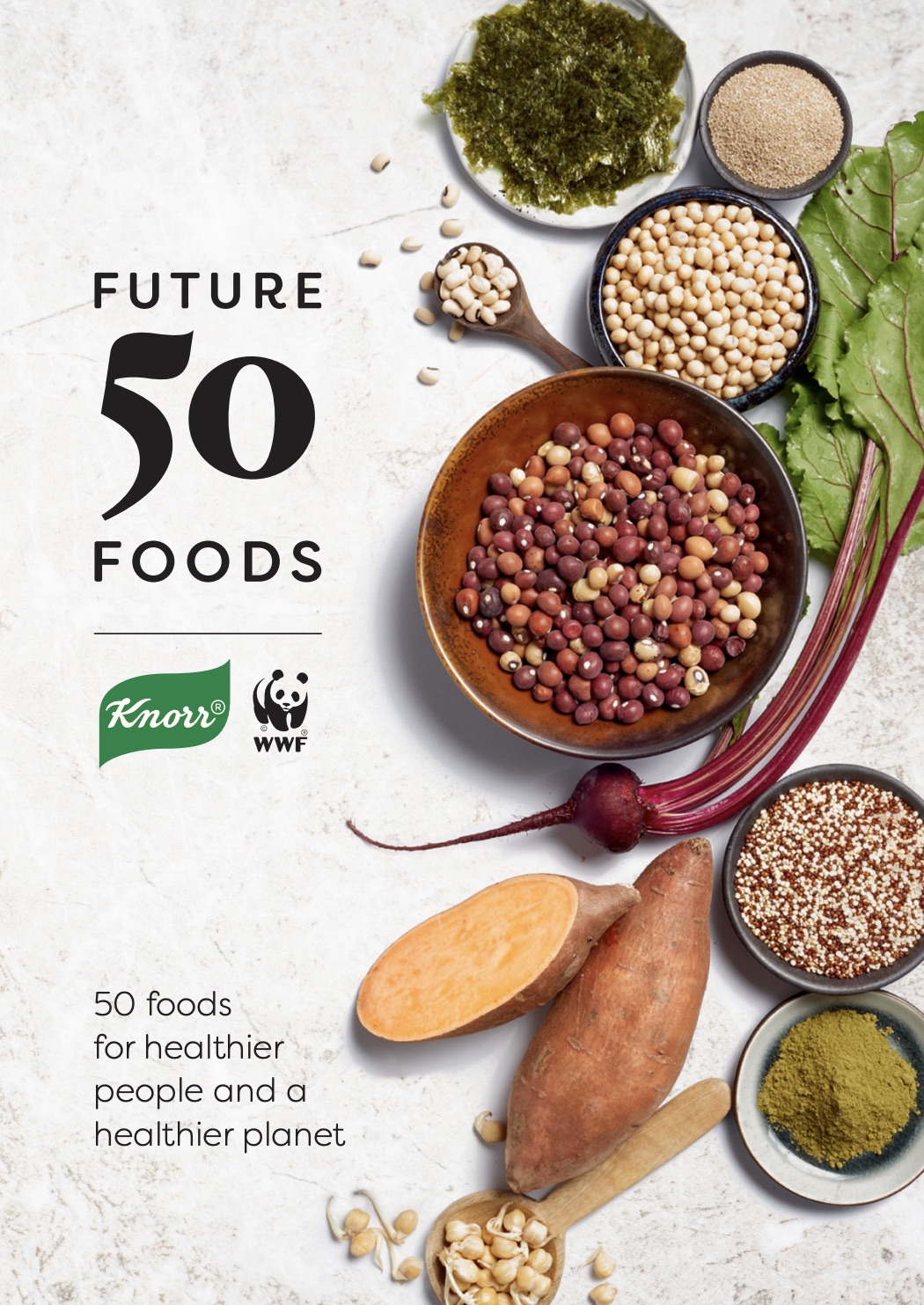
You can read the complete Future 50 Foods Report (PDF) at World Wildlife Federation UK. It was created in collaboration with Knorr Foods, The WWF, and Dr. Adam Drewnowski, Director of the Center for Public Health Nutrition at the University of Washington, with input from orgs including Bioversity Int’l, Crops for the Future, EAT Foundation, FReSH, fGlobal Crop Diversity Trust, Oxfam Great Britain, and more.
Note that despite Knorr’s involvement, there’s nothing at all branded about the report or the research results.

